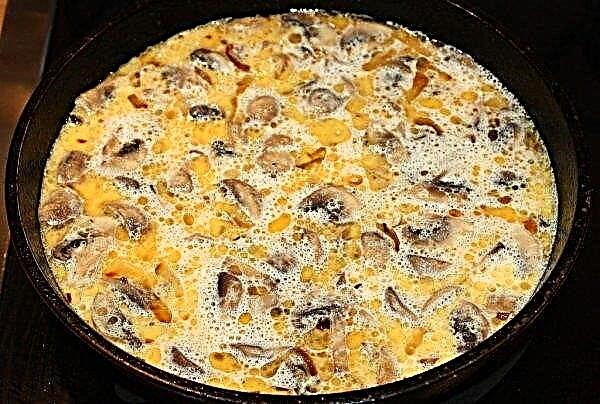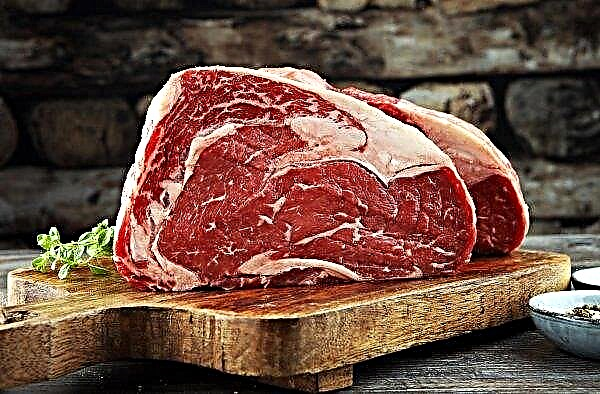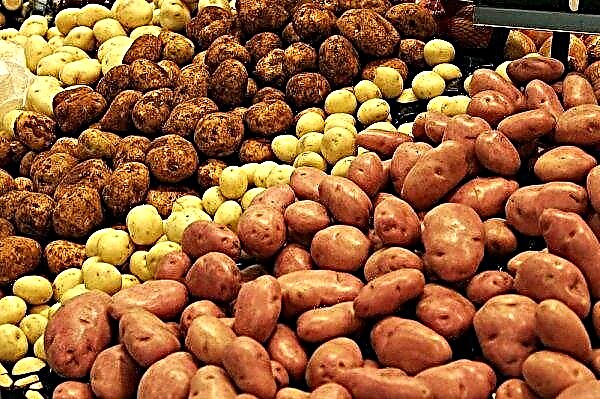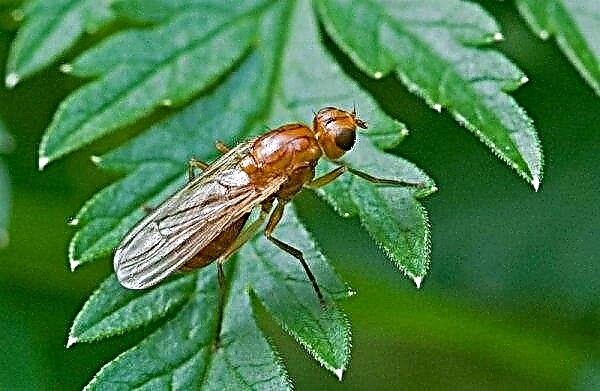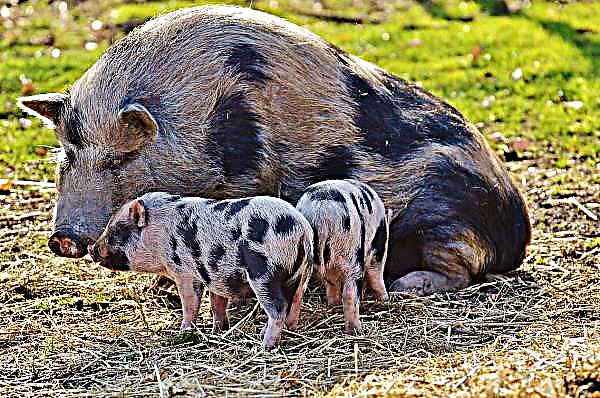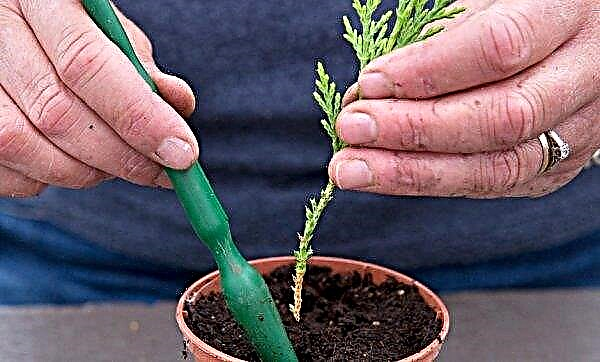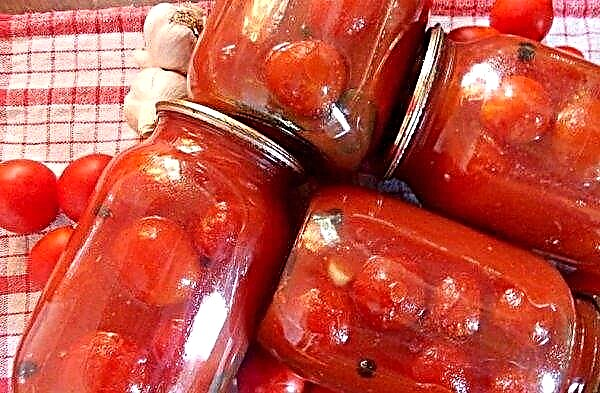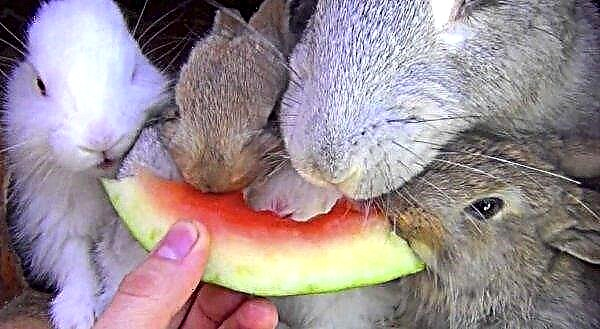Food safety is important for maintaining human health. That is why many are afraid of black dots on Beijing cabbage. Dark spots can indicate infectious and non-infectious lesions, so you should be careful with this symptom. About what can cause the appearance of dark blotches on the leaves of a vegetable, whether it is possible to eat a product and how to deal with it, read below in the article.
Description of fruits and vegetables
Beijing cabbage is a vegetable from the Cabbage family, one of the subspecies of turnip. The culture is also called Chinese or lettuce, Chinese salad or petsai. In cultivated form, it is grown as an annual plant.
Did you know? The homeland of Beijing cabbage is China. The first mention of the plant is found in written sources of the 5th-6th centuries A.D. e.
The vegetable has the shape of a rosette in the form of a loosened head of cabbage. The shape of the vegetable is cylindrical. Cabbage foxes are wavy, loose, with serrated or wavy edges. The color of the product is most often light green. There are also yellow and bright green specimens. The product contains vitamins A, C, B1, B2, B6, and PP indispensable for the human body. Also in the leaves contains up to 3.5% protein.

The main reasons for the appearance of black dots
Biologists name the two main causes of the appearance of dark inclusions on the leaves of Chinese cabbage. These include point necrosis and alternariosis.
Point necrosis
Point necrosis is a non-infectious lesion. The disease develops due to a metabolic disorder of the plant. Incorrect top dressing most often leads to point necrosis, in particular excessive application of nitrogen-phosphorus agents.
Did you know? Chinese cabbage in Korea is fermented to make kimchi. This is an ancient traditional dish that has become the hallmark of the country.
Spot necrosis can be determined by a number of signs:
- points are depressed, round or oval in shape;
- the color of the spots is black;
- size within 1–4 mm;
- the lesion appears on the outer sheets, very rarely on the inner.

Often the disease begins to develop on almost ripe vegetables. With the defeat of about 45-50% of the fetus, spots may appear after harvest during storage.
Alternariosis
Alternariosis is an infectious disease that causes fungal spores. The main reason for the development of the disease is excess moisture. This contributes to excess watering and a humid climate. Infection can affect the plant at the seedling stage. The main symptom in this case is black streaks and spots on the germinal leaves. Often the disease develops on already developed heads of cabbage. The lesion has the appearance of dark spots with a touch of ash.
Important! The risk zone for alternaria disease includes plantings of Beijing cabbage affected by pests.
Is it possible to eat cabbage with black dots?
Agronomists differ on the danger of Beijing cabbage with black spots. Some believe that it is enough to remove the affected sheets, and rinse the vegetable itself. If you heat-treat the product, then there should be no problems.
According to others, it is safe to cut only sheets with point necrosis. This is not an infectious, but a physiological lesion that cannot harm a person. Alternariosis is dangerous in the form of fungal spores. Such a product cannot be completely cleaned, even if the affected areas are cut off. It is better to dispose of a sick head of cabbage.

How to treat the appearance of black spots
The treatment of plantings depends on the specific disease. Turned necrosis is a symptom of malnutrition. The disease cannot be cured. You can only prevent the defeat by correctly applying fertilizing during the growing season.
Important! Use the drugs strictly according to the instructions so as not to harm the plants even more.
Alternariosis as a fungal disease is eliminated with the help of fungicides. Among the most effective drugs for the treatment of vegetables are Quadrice, Skor and Immunocytophytes.

In order not to wonder about the methods of treatment, the grower needs to think about preventive measures in advance.
- These include:
- preplant soil digging in the fall;
- soil replenishment before planting with means with elements of phosphorus, molybdenum and boron;
- planting varieties resistant to fungal infections;
- seed treatment with 1% potassium permanganate solution;
- planting vegetables after the "right" predecessors, according to the rules of crop rotation;
- modern and regular watering, fertilizers, loosening of soil and weeding;
- storage of crops in a ventilated room at temperature indicators of +5 ... + 7 ° С.
You can use the vegetable with caution, if the cause of the appearance of points was point necrosis. In this case, it is enough just to cut off the warning blotches. It is better to refuse to use the fruits of patients with alternariosis in food. If you grow a crop yourself, then problems can be avoided if you take care of the necessary prevention in time.

